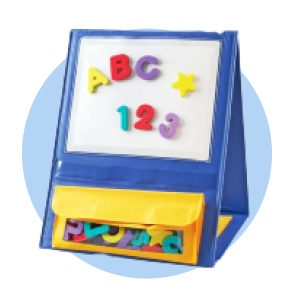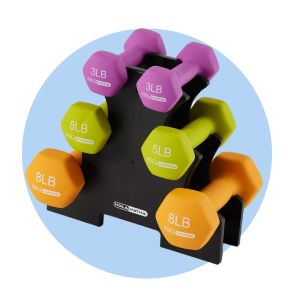
The Nonprofit Professionals New Year Planning Guide
End the year strong
For nonprofits, a fiscal year isn’t always the same as a calendar year. While we generally think of years as starting on January 1st, for nonprofits, they may start as early as December 31st or as late as June 30th. The date is still important, regardless of when it occurs, so you’ll want to be ready for it—and in this article we’ll show you how.

Reconcile financials
Since so many of the other items on this checklist revolve around knowing your financial status, reconciling your financials is an important first step for closing out your year.
Hopefully, you’ve been keeping careful track of your accounting throughout the year. If not, now is the time to do so. Review your bank accounts and balance them. Track your receivables, payables and petty cash. Perform a physical inventory audit to see what kind of (and how much) inventory you have in stock. The goal is to have a clear picture of how much money came in and how much money went out.
If you use an accounting service, ask them for a detailed year-end report. Similarly, if you use accounting software, you can export a report. If you use neither, you’ll have to do it the old-fashioned way: with a calculator and time.
File IRS tax reports
As a nonprofit organization, you are likely required to file an annual federal tax report. For most tax-exempt organizations, this will involve filling out and filing IRS Form 990.
Form 990 is how the IRS collects information about nonprofit organizations and ensures compliance with relevant laws and regulations. Many nonprofits choose to make their Form 990s available to the public as a method of sharing information about their programs and expenditures.
To fill out Form 990, you will need to have all of your necessary tax documents on hand, including W-9s from contractors and service providers. This makes it important to reconcile your financials before you get started.
Complete state & grant reports
Some states require nonprofits to file reports similar to the IRS Form 990. You will need to know if your state requires these and what they are. Check with your state’s Office of the Secretary of State to find out whether or not you need to file a report and how to do so.
Fiscal year-end is also a time when many grant programs require a report or update on how you’ve used their funds. Take care when making your grant reports. How you file them could have an impact on whether you will be considered again for the same grant in the future and could also impact your eligibility for additional grants from the same agency or organization.

Schedule an annual board meeting
The frequency of required board meetings (and the makeup of your board) is dictated by the state your nonprofit was founded in. Most states require you to hold at least one annual board meeting, although many nonprofits choose to hold them quarterly or even monthly. Beyond the requirements set out by your state’s Office of the Secretary of State, it’s up to you and your board how often you have meetings.
Your state may also dictate whether a board meeting must be attended in person or if it can be handled remotely. Your organization’s bylaws may also have language concerning how board meetings are to be held and managed. Carefully consult both state laws and your bylaws before scheduling an annual meeting.
At your annual meeting, your board will handle matters related to the running of your organization, such as:
Electing company officers
Nominating board directors
Reviewing your organization’s finances
Assessing the efficacy of your programs
Evaluating the overall effectiveness of your mission
Your board’s primary responsibility is to ensure that your organization is using its resources effectively to pursue its mission. The annual meeting is most often where boards evaluate your success and guide your future endeavors.
This makes it critical that you enter the board meeting prepared to present your case and answer any questions.
Write donor acknowledgment letters
Nonprofits survive on the charitable giving of others. As such, it’s important to acknowledge your donors and thank them personally. This can often result in repeat giving, turning a one-time donor into a regular supporter.
You may choose to write simple acknowledgment letters thanking a supporter for their contribution. You might also take the opportunity to communicate with your donors about upcoming programs or events.
Prompt year-end giving
If your fiscal year-end is December 31st, it will coincide with the traditional season of giving. This gives you an opportunity to reach out to supporters and encourage them to contribute before your year-end financials are due.
Carefully consider how to reach out to supporters at this time. You may have a program that’s a natural fit for year-end contributions. Or, you might want to update supporters on the progress you’ve made throughout the year and tie your organization’s success to their generosity.
Assess future fundraising strategies
Now that you know how well your organization did the previous year, it’s time to begin planning for the next. This can be an agenda item in your annual board meeting, or you might assign a committee to discuss ways to bring in additional funds in the new year.
You will want to look at areas where you have had success in the past and aim to replicate and expand on those. Prioritize reaching out to large donors and making their contributions recurring or even matching donations from other contributors. You might also look at new areas and fundraising methods you haven’t used before, like selling new types of merchandise.
Apply for grants
While writing grant applications should be an activity you undertake year-round, end-of-year is a good time to assess the status of your grant applications and what additional grants you might be eligible for. Different grants will have different application processes and due dates, so it may help to track all of your prospects in a spreadsheet or other organizational tool.
Once you’re effectively tracking your grant applications, spend your year-end assessment time comparing your expected grant funds to your organization’s operating expenses. Remember, grants are only one source of income for nonprofits. Charitable giving and earned income from memberships, events or merchandise sales make up the rest.
Set organizational goals
The year-end is also a time to assess where your organization is and where you want it to be. Evaluate your programs and their effectiveness, and plan to expand or add programs. How big is your staff, and do you need further support?
Setting organizational goals is about looking into the future of your organization and plotting a course for the next year. If you need new hires, estimate how much that will cost and add that amount to your fundraising goals for the new year. If you have new grant applications in the pipeline, add those to your expected revenue as well.
Take a hard look at your entire operation and set goals for how you can expand or increase programs and operations in the new year. These goals will then inform your discussions with the board at your next annual meeting.
Close out your year strong with Walmart Business
We know that running a nonprofit is not easy. That’s why we offer the tools, tips and an ever-expanding array of products to help you manage your organization and save time, money and hassle.
With a Walmart Business account, eligible organizations can receive tax-exempt shopping, multiuser accounts and automatic delivery of everyday essentials.1 Already have an account? With Walmart Business+ you’ll receive access to features like free shipping with no order minimum,2 free delivery from the store with a $35 minimum order3 and 2% back in Walmart Business Rewards on orders $250 or more.4


Limited-time offer
Unlock your special promo code
Stay informed on Walmart Business news & get $20 off a $100 purchase!1
1Minimum order of $100. Promo code can be used one time & may not be combined with other offers. Offer not transferable & void where prohibited by law. Customer responsible for all applicable taxes. Offer expires 12/31/2025 at 11:59pm PT. Further restrictions apply. See terms at checkout for details. Promo code offers available in limited quantities. While supplies last.
1 Excludes most Marketplace items, freight and certain location surcharges.
2 Restrictions apply.
Exciting news awaits
Hear firsthand about new products, features & promotions.
By clicking submit, you agree to receive emails about Walmart Business and acknowledge you have read and agreed to our Terms of use and Privacy Policy.










